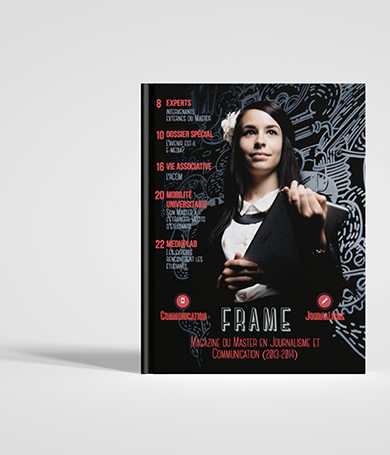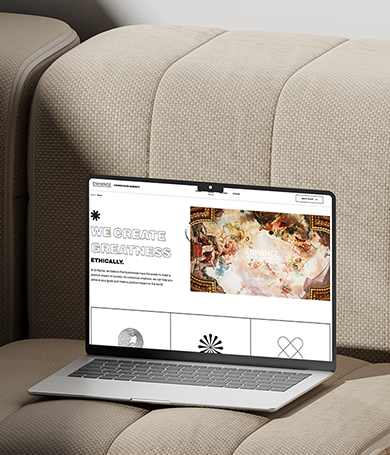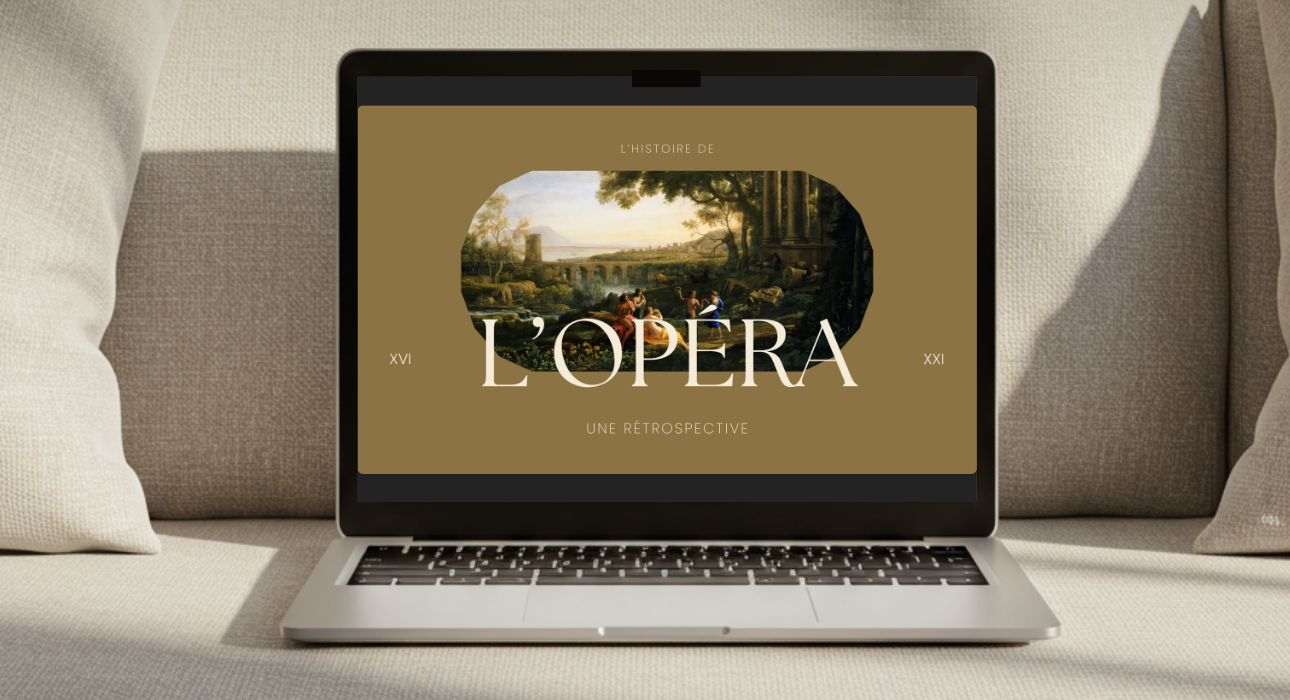
Case Study – Opera: A Visual Retrospective
-
Date
06/2025
-
Category
Corporate Communication, Content Creation, Design
- Presentation
-
Tools
Canva
Overview
This presentation was developed to demonstrate how a complex cultural subject can be made accessible to a mainstream audience through structured storytelling and strong visual design. Opera, often viewed as exclusive or elitist, was chosen as the focus because its long history and evolution provide rich material to reframe in a clear, engaging, and approachable way.
The objective was to deliver a presentation that combined educational value, audience accessibility, and professional design standards, ensuring that both newcomers and enthusiasts could connect with the content.
Concept
The presentation was conceived as a visual retrospective: a narrative journey from opera’s aristocratic origins to its place in today’s digital and inclusive cultural landscape.
The concept emphasized:
- + Clarity of narrative: structuring the story around key historical periods (Baroque, Classical, Romantic, Modern).
- + Mainstream accessibility: highlighting not only artistic milestones but also the democratization of opera, its cultural relevance, and contemporary themes.
- + Engagement tools: integrating quotes, artist profiles, and multimedia references to bring the subject to life.
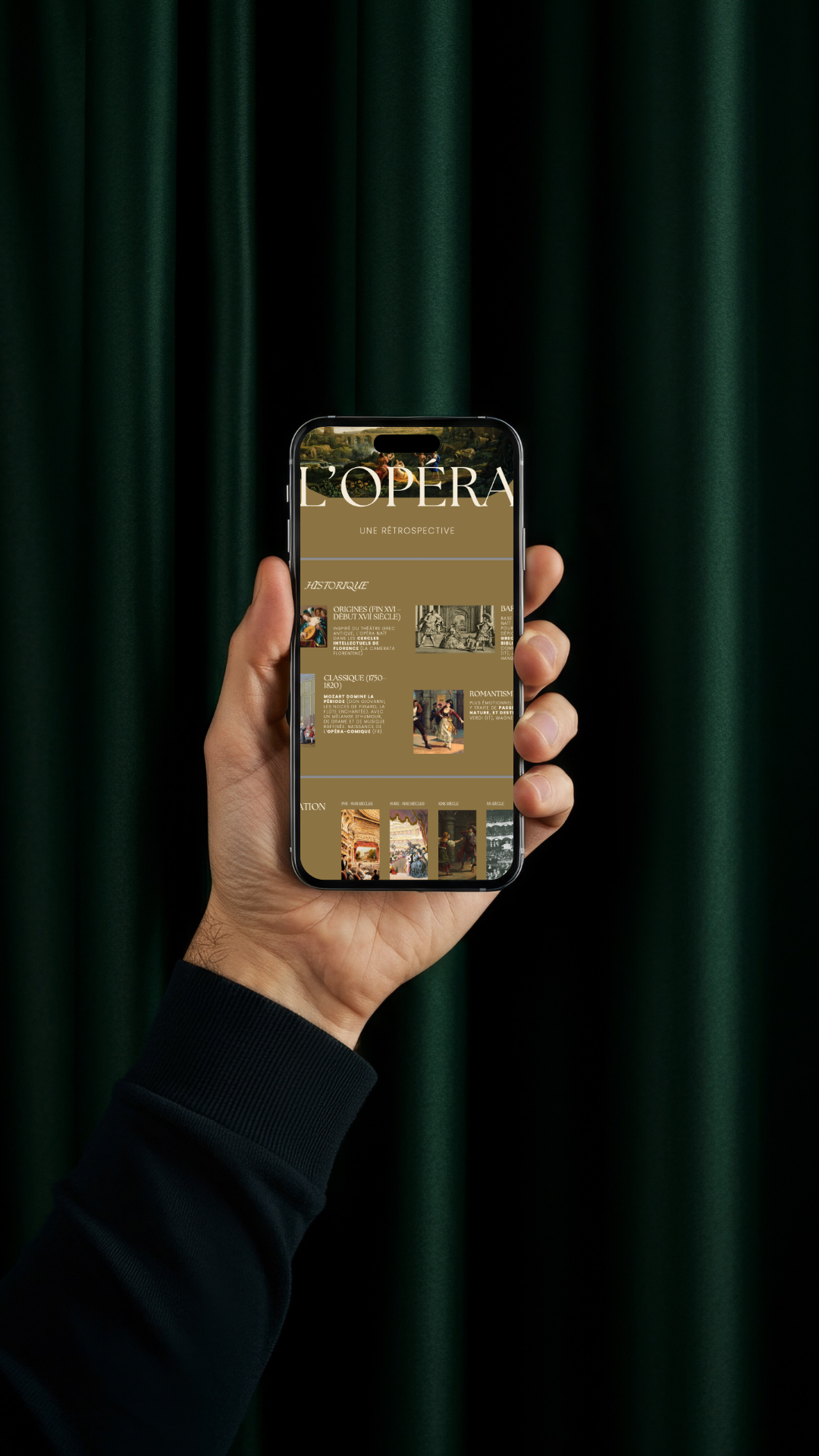
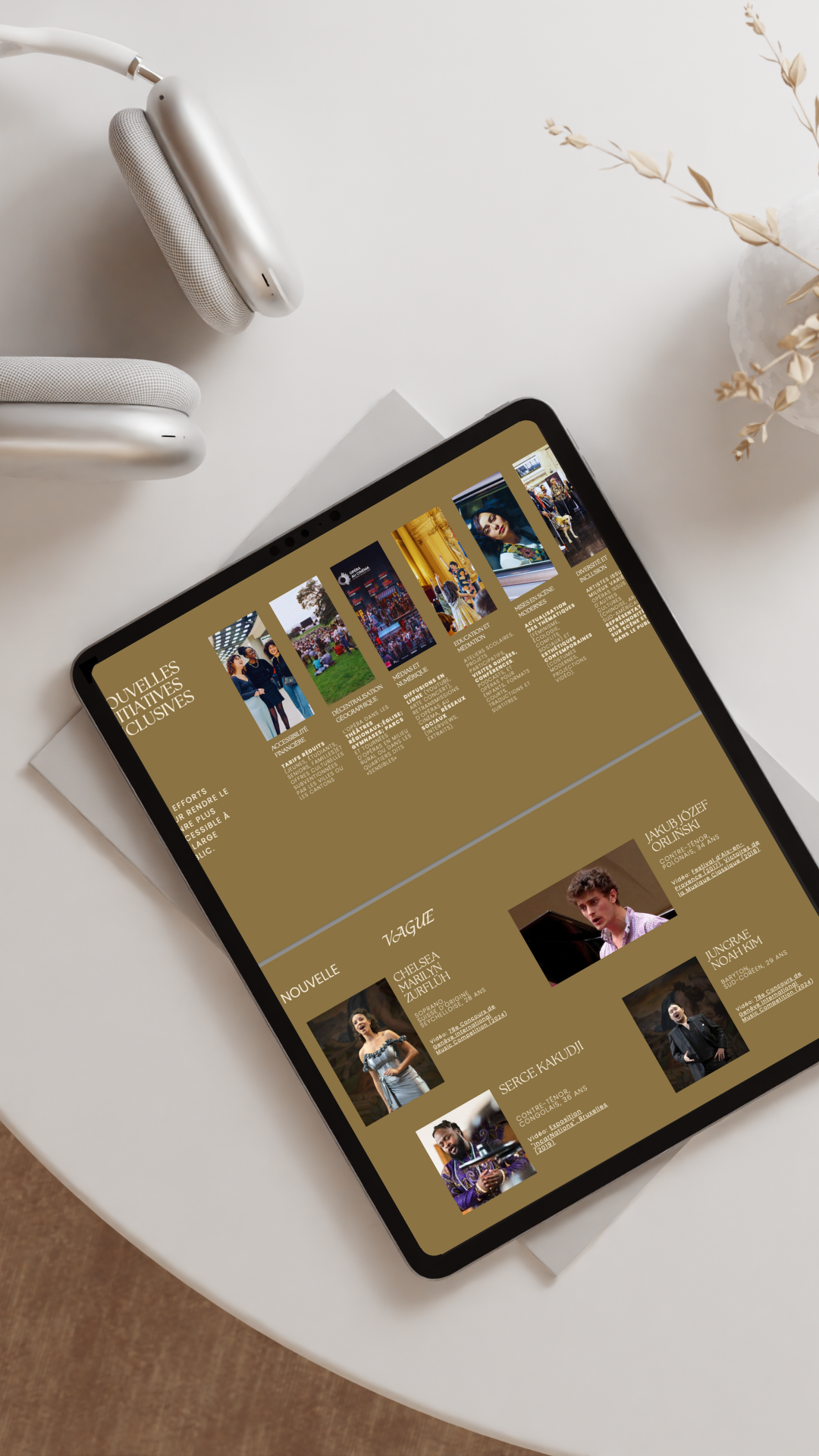
Process
The development of the presentation followed a clear methodology:
- + Content research and curation: condensing centuries of history into essential themes, ensuring accuracy while avoiding overload.
- + Storyline structuring: creating a progressive, audience-friendly flow, comparable to a corporate narrative arc (origins, evolution, challenges, future outlook).
- + Visual system: applying consistent typography, color palette, and layout hierarchy to guide the audience’s attention.
- + Enrichment through multimedia: including videos, links, and contemporary examples to extend engagement beyond the presentation itself.
Outcome
The result is a professional, audience-oriented presentation that transforms opera’s long and complex history into a format that is:
- + Educational: delivering historical insights in a digestible, easy-to-follow structure.
- + Engaging: enhanced with visuals, artist spotlights, and cultural references.
- + Relevant: connecting historical traditions with today’s priorities of diversity, inclusion, and accessibility.
Results Achieved
This project demonstrates how thoughtful presentation design can reframe a subject often perceived as niche into a compelling story for a wide audience, bridging the gap between tradition and modern cultural experience.


